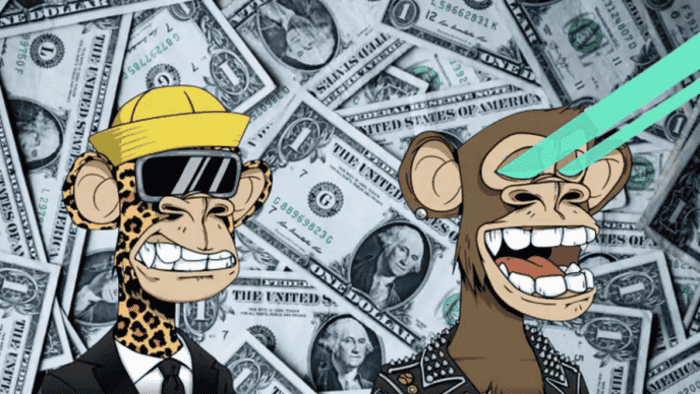NFTs: Even if you are not into the world of cryptocurrencies and blockchain, you have probably come across this subject when following gaming news. Touted by some companies as the “future of the industry” and something considered “revolutionary” to adherents, technology has proven to be quite divisive, on the level where you either love it or hate it with a passion (Via).
Amid so many emotions, it is difficult to understand exactly what this technology is and what impact it can have on games. After all, is it merely the sale of JPGsor does it have applications that go beyond that? Is it worth investing in this market? And are there risks in bringing this system to conventional games?
Answering these and other questions on the subject is the purpose of this article, which tries to explain hohow works at the moment. However, be warned: as the technology is still new and evolving every day, much of what we know about it is changing fast, and the ways in which it can be applied have not yet been fully explored.
What are NFTs?
NFTs is an acronym that stands for “non-fungible tokens”, or, in a literal translation, non-fungible tokens. The name seems strange, but it serves to name the characteristics of the virtual goods that the technology offers: they have unique registration codes that cannot be replicated, with values that do not correspond 100% to other digital assets issued, however similar they may be.
For ease of understanding, you can think of them as collector’s items or even works of art. Imagine the Monalisa: there is only one official copy in the world, and even if it can be replicated or printed on t-shirts, only the official painting has real value. In the case of NFT, things get a little more complicated because we’re talking about virtual goods — or, more precisely, certificates attached to virtual items.
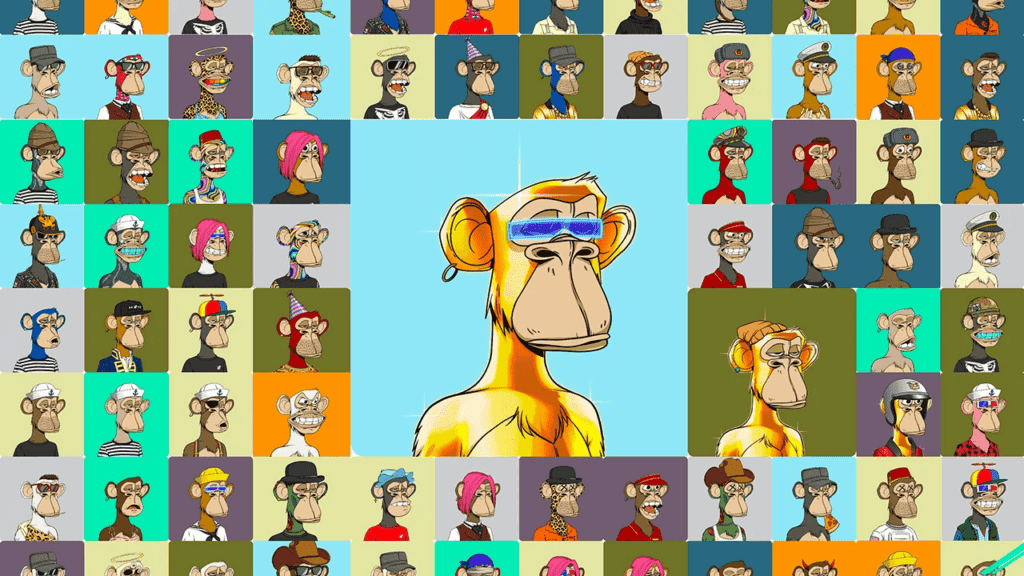
In the gaming world, for example, an NFT can be linked to an extremely powerful single sword within a game’s universe. By purchasing the token, you are not entitled to the sword itself, but to a unique certificate (which can be sold or exchanged) proving that you are the rightful owner of the item.
In other words, when you buy an NFT, you at the same time become the owner of the item — earning a certificate that guarantees this — doesn’t mean that you have complete rights to it. That is, it can continue to be displayed on social networks, shown by the developer in promotional arts, or stamped on a t-shirt. But, within the game, only you will have possession of it, which cannot be replicated.
What is this “fungible” thing?
The concept of what is or is not fungible has always been present in our daily lives, even if this word (a bit strange, let’s face it) is not used so commonly. A 10 reais bill, for example, is considered a fungible item — it can be .hanged without loss of value for any bill of the same sum without its value being depreciated, even if one is brand new and the other is crumpled and worn from use. .
It is worth noting that the scale between fungible and non-fungible is not always absolute and may vary even when dealing with the same item. A God of War Collector’s Edition, for example, may not have the same value as another depending on the time that has passed since its release and the state of conservation of each one.
Do you think a physical collectible value can be compared to an NFT?
While both were fungible at launch, the value of an item that has been opened and used today is different from one that remains sealed and in perfect condition. That is, you can say that the rarest collector’s item is closer to being something unique — and non-fungible — than the one that is already worn out. The same can apply to money: a note of a coin that has even ceased to be in circulation can be sold to a collector for much more money than its original monetary value under the right conditions.
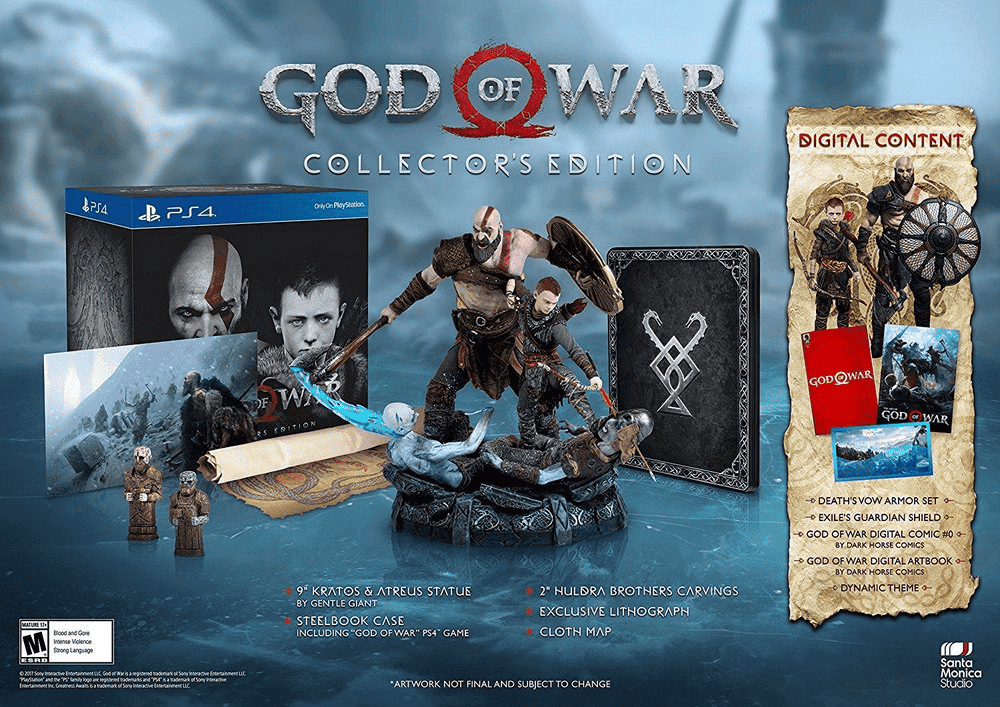
No, they can’t
It is precisely thanks to this concept that the worn-out copy of Super Mario Bros 3 that you have at home is not worth the same millions obtained by a collector at an auction held in 2021. It is worth noting that, in practice, the value associated with an item even has to do with its rarity and production value, but it does not shy away from having a high degree of subjectivity and speculation. So don’t consider yourself wrong if you find it absurd to pay millions for something, however desirable it may be.
Another aspect that differentiates NFTs is the fact that they are linked to the blockchain, a verification system that guarantees the authenticity of digital goods and practically makes it impossible for them to be stolen or copied improperly.
Think of blockchain as a large ledger shared between thousands of computers, all of which record every movement of the digital asset and need to authenticate every change that has taken place — this makes the process decentralized and very secure, bt the same time implies a large energy consumption.
It’s possible to link a single blockchain with millions of users, each taking part in the checks and carrying out their own transactions (which trigger the block checking process). While it is not necessary for the entire to verify the entire blockchain for an exchange or sale to be cleared, it still involves a generous amount of machinery and processing power: i.e. expenditure of electricity.
And in games, how does it work?
In the gaming world, NFTs can be used in association with any digital element present in them. While this opens up the possibility that you can buy the certificate of possession of a song or texture of a game, for example, in practice the technology is associated with items and characters that interact directly with the gameplay elements.
In Ubisoft’s Ghost Recon Breakpoint, NFTs association is too powerful equipment (and with unique characteristics) that players can obtain to equip their characters, sell or trade with others. The difference from a conventional item comes from the connection of the virtual asset to the blockchain, which guarantees its authenticity and allows to carry out operations without the game’s producer intermediations.
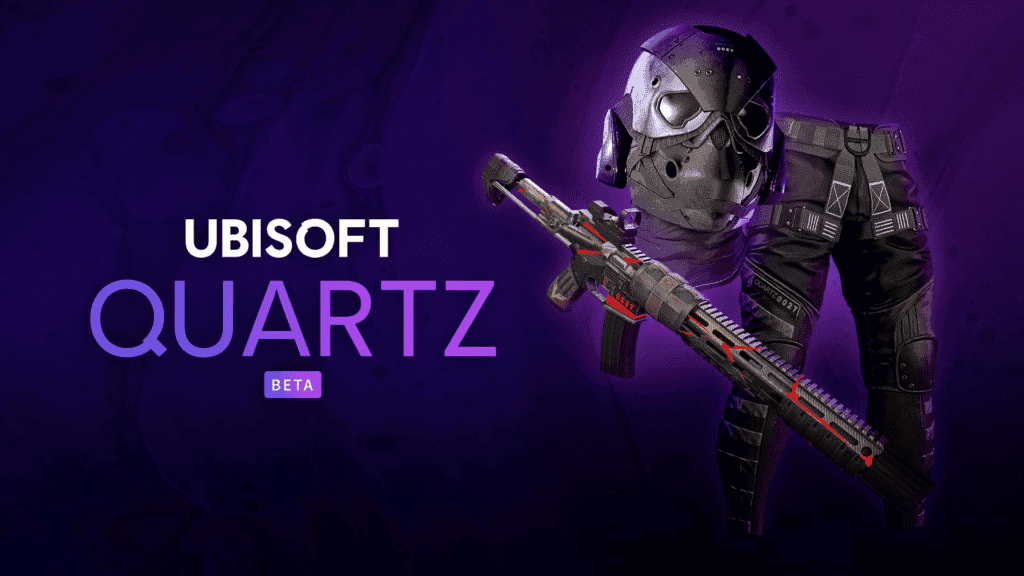
For “lawyers” tech, this is one of the advantages of implementing NFT: a developer cannot c characteristics. It has a totally unique look. In other words, this guarantees the possibility that it will become rare, appreciate in value, and can be resold for a considerable profit. All this is without the influence of external agents in an environment in which the market supposedly regulates itself.
In other words, what differentiates an NFT from a conventional item sold through microtransactions is the fact that they give the consumer more control over what to do with it. However, there are some barriers that make this story not so ideal.
NFTs are Decentralized but linked to centralized bases
One of the great promises of NFT defendants (for example, the ex-Linking Park, Mike Shinoda) is that the technology will allow the interoperability of assets created for different games. Can you imagine how cool it would be to be able to buy Chaos Chains in God of War and use them on your Fortnite or Assassin’s Creed character? In theory, this would even be possible, but there are a number of complications. Players will need to take this into account.
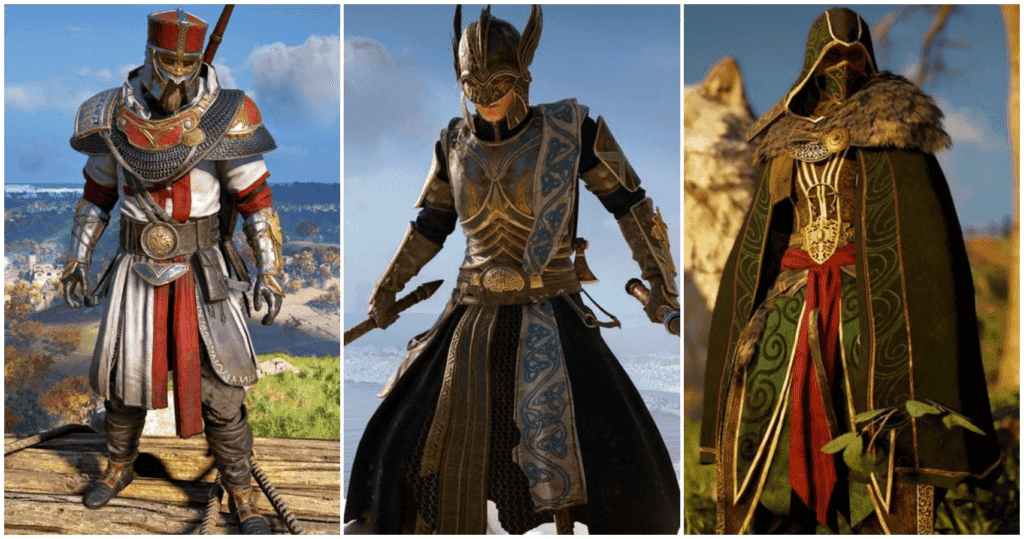
While the NFT market is based on the blockchain, which is somewhat decentralized, games still operate under a very centralized scheme. In other words: nothing guarantees that the assets from Sony Santa Monica to enable the use of Chaos Chains in its franchise are eligible for other games. To recall, the technology guarantees Some relevant players want the virtual items. However, it does not guarantee that you actually have it, nor any rights to how to use it.
There are relevant players that want to push the trend forward
Theoretically, there are scenarios where devs can move an item between games. However, are still several obstacles to deal with. The engines of the two games can be different. Let’s say, for example, one game uses Unity and another one uses Unreal. Therefore, it’s impossible to move the item or equipment easily. Likewise, a weapon of the type may not fit the purpose of another game. Even if it does, it may have a first-person view style. It makes it impossible to use the item in its original form.
Real Saturday convo. I’m surprised by so much negative sentiment by gamers about NFTs. Can we chat?
Of all the applications, gaming is a place that *players* can benefit a LOT from blockchain.
Do they not know yet that there are eco friendly NFTs?
Lets talk, keep it civil!
— Mike Shinoda (@mikeshinoda) January 8, 2022
Do you see the complexity of the issue? The solution for true item interoperability necessarily involves building a shared common base, built on the same engine and assets.
In other words: for this to happen, the industry as a whole would have to go through a huge standardization process. Ultimately, it would put a serious risk to innovations and different game genres. Engines and assets are flexible to some extent. However, they will inevitably encounter barriers that require creating new “molds”. These come to provide broader and easier solutions. Furthermore, migrating old work to them is not as simple a task as you might think.
So, when someone says that NFT is an easy solution to a complex problem, it seems that the person doesn’t understand the process of game development, nor the implications that the transition of an item to a different context can bring. This process is difficult even within the same franchise, due to design language evolutions and game proposals — Bayek’s outfit may be present in Assassin’s Creed Origins and Assassin’s Creed Valhalla. However, it works very differently in each game given its characteristics. and unique proposals.
NFTs as outfits or the so-called skins
Another issue involves the fact that the value of a digital token depends heavily on the context. Moreover, due to the technical functionality, there’s not much control. In the end, the consumer rarely has any control over it. Imagine that you have acquired a super rare sword from an RPG. It stands out for bringing immense fire properties and destroying all enemies easily. It’s Cool huh? What if, after spending on an NFT, the game gets an update? Then, all enemies are now resistant to your item’s element? The item becomes less powerful. Hence, your investment goes down the hill. Since it’s an NFT, the token or equipment properties will remain intact. It won’t support any kind of modification.
This means that the decentralized aspect of owning, selling, and trading the item remains. Therefore, much of its monetary value (and usefulness in a game) still depends on centralized decisions. They will always depend on the developer. If it’s already annoying when your favorite weapon loses power in an online game! Now, think how much more annoying it will be to see that happening on something that costs your money.
NFTs turn play into work
Experiments involving the monetization of goods associated with a game are nothing new in the industry, which has long seen players finding ways to profit in contexts that, in principle, should not have this objective. This is especially common in the world of MMOs, where there’s a whole parallel market for buying and selling items for real money — who hasn’t heard of the “Gold Farmers” of World of Warcraft?
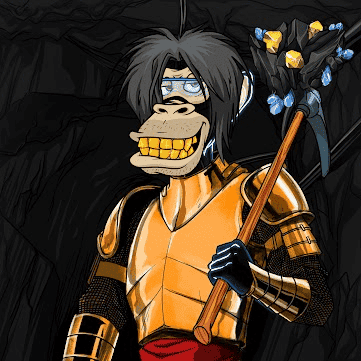
However, no experience has shown as well how creating a real money item market can affect players’ perceptions — and the way they play — as Diablo III’s Auction House. It debuted in 2012 along with the game’s arrival on PC and promised the ability to earn money easily by selling the loot you found to other interested players (of course, giving Activision Blizzard a small slice of the profits).
On paper, the idea seems perfect for the developer. After all, knowing that it’s possible to sell game items anyway in the parallel market, it cut out middlemen and offer a safe environment for its consumers. In practice, the system directly influenced the game’s design (which started to give out rare and powerful items less frequently) and the players’ perception of value.
Playing games may not be fun at all
It was often easier to upgrade equipment using the Auction House than killing enemies and venturing into Diablo III. In other words, the monetization solution make many people see no more purpose in playing. Therefore, they have completely left the title behind.
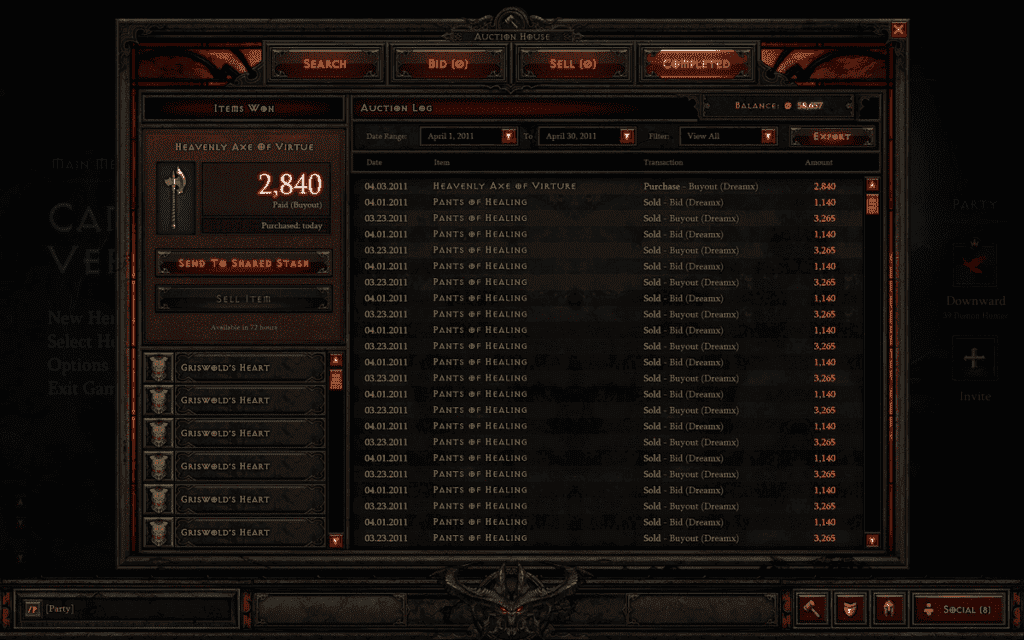
Blizzard itself realized the mistake. After all, it has killed the game’s core fun – kill monster to get cool items.
In other words, adding items that had real value outside the game impacted the economy and caused many to treat it like a job. The intention was no longer to play to make your character powerful with the items. The new goal is to sell them to make money. Blizzard, make things less fun and less rewarding. This was to balance the amount of money users have been spending.
The play-to-earn model that becomes pay-to-earn
Some big companies like Ubisoft, Square Enix, and Konami have an interest in working with NFTs. However, many of them still do it on an experimental basis. A lot of this is due to the bad faith that technology has left in the majority of the public. Those see it as a way to make easy money and that doesn’t bring any real advantage to games. It’s almost like a new kind of microtron or loot box, that nobody ( other than the owner of the money) is asking for.
Who is really guiding the development of this market are independent companies, which bet on a model known as “play-to-earn” to attract the public’s attention. The proposal is simple: why, instead of just playing for fun, you don’t do it too to earn some money and supplement the income of the house?
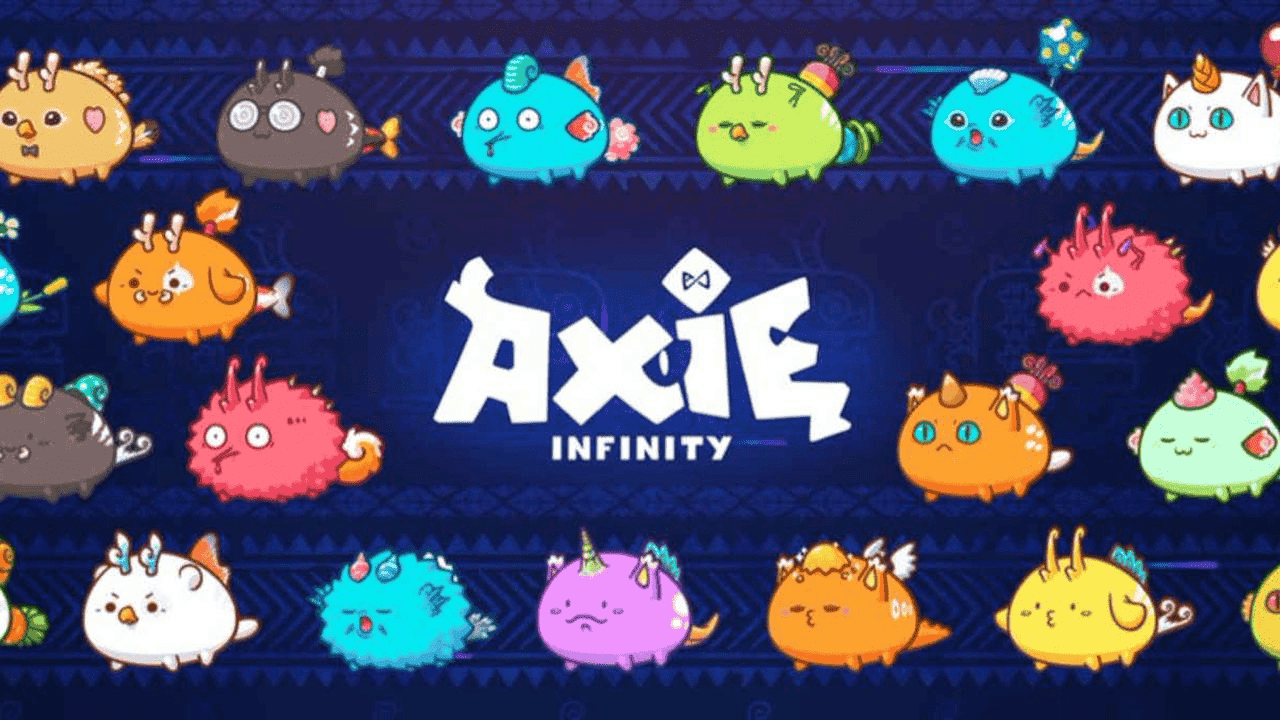
One of the most famous titles in this segment is Axie Infinity. In the game, players create monsters and strengthen them. After this “training” they can sell the monsters for a value greater than the initial investment. However, to enter the game, you must first open your wallet. The steps also come in the form of potions that are equivalent to Ethereum cryptocurrency tokens, from which developer Sky Marvis takes a percentage on each trade you make.
While the profits made by players are not astronomical, they are real — no wonder, the game became a phenomenon in the Philippines during the COVID 19 pandemic, given its ability to generate returns greater than the country’s minimum wage (something that also attracted many Brazilians interested in earning in dollars). However, not everything is wonderful: the entry fee to be competitive is high, which results in the creation of scholarships.
Play-To-Earn may become Pay-To-Earn
In practice, these are pools of account-sharing practices. This practice goes in exchange for a small share of the profits. It sits anywhere from 60% to 70%. Of course, it depends on multiple discussions. As revealed by a report on the Overloadr website, this scenario tends to be quite informal. It’s even precarious. After all, it has contracts in which the player needs to beat daily quotas to continue making some profit. However, this profit can decrease overnight.
Remember what I explained above? The owner of an NFT has no control over the context it goes to. Axie Infinity has shown very well how this can work. To the detriment of players: in an update, the developers not only reduced the earnings in tokens. They also made it possible for only players with a certain rank to redeem them.
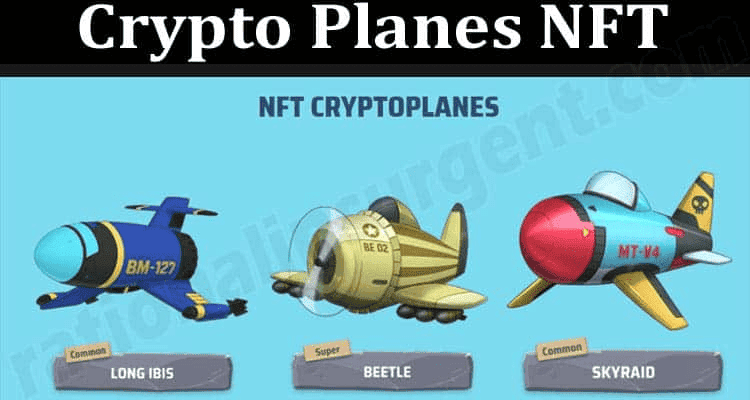
As a result, many players need to dedicate more time to the game. This is to compensate for the initial investment. The solution, for those who could, often involves investing more money in the game. The money goes on buying more powerful (and expensive) creatures. These may ensure competitiveness in online matches.
In other words, style games don’t lie when they say you can make money playing. However, income does not always compensate for the initial investment. Or it can’t even replace a more conventional activity — no wonder. Axie Infinity proves to be quite popular in countries such as Brazil and the Philippine. These by the strong appreciation of the dollar and a market full of unemployment and precarious conditions. There are those who managed to earn a lot of money. However, they are the exception, not the rule.
The reluctance to accept NFTs
There are several other titles that use similar models. Similarly, there are experiences. However, not all provide the same entry fee to be able to play and generate some profit. However, most still retain one element in common: the gameplay tends to be simple and repetitive. Usually, the focus is exclusively on grinding.
However, the lack of the “fun game” aspect did not serve as an impediment. There is NFTs gaming emerging everywhere. The common goal is to explore! Given the repercussion of the technology, it has attracted the attention of several investors. Those are not afraid to allocate sumptuous sums of money in risky projects. Of course, NFT is still a risky venture. After all, it’s yet to leave the ground.
Some websites are against the NFT propaganda
The novelty of the technology, and the lack of regulation, open the room for scammers. This only increases the distrust of the gaming public. The Games Industry website, no longer covers any NFT-related stories: for publishers. It says: “the benefits that NFTs and cryptocurrencies can bring to games are speculative, but the downsides are concrete”.
The media vehicle points to the highly speculative characteristic of the segment. Furthermore, it also denounces the risks it can bring to the environment. “The more pervasive this technology becomes, the more demand there is for mining [cryptocurrency]. Therefore, the higher the price gets and the more electricity use increases”. Argues editor Brendan Sinclair.
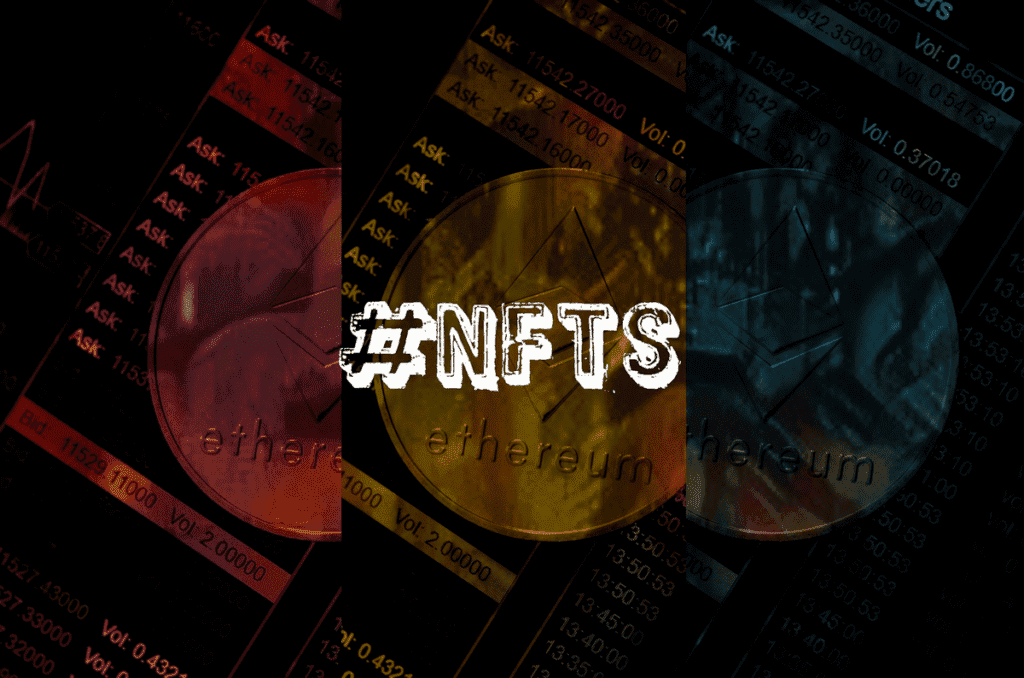
The very existence of the play-to-earn model changes what we expect from a game and its ability to be fun. Users playing NFT games want to fully earn from them. Therefore, they won’t waste time on secondary and unprofitable activities. Even if these activities would be, in another scenario, considered fun. The goal of playing NFT games intention is the return. In other words, the design and even the end goal of the game as a “piece of art” will change.
The bloat issue
When researching NFTs and cryptocurrencies, it is not uncommon to find texts stating that they are a risk. Yes, they may represent a risk to the future of the planet. According to Nature, there are high emissions coming “from” Bitcoin. The crypto is capable of increasing the temperature of the planet by up to 2°C. This will happen in three decades. Of course, the research is not taking into account all the other pollutants.
This is because this entire market is based on large computing centers. These have high-performance machines working together to solve mathematical problems. That includes blockchain verification. This results in a large consumption of electrical energy. Furthermore, there is a large amount of waste. You’ll eventually need to replace parts. After all, the high usage will quickly cease their life cycle.
The cryptocurrency relationship
There are NFT solutions that purport to be carbon neutral. Furthermore, Ethereum is about to change its mining process. The fact is that the segment as a whole does not follow a sustainable path. Kazakhstan, which accounts for 18% of the world’s hash rate produces most of its energy. It goes through ancient and extremely polluting coal mines.
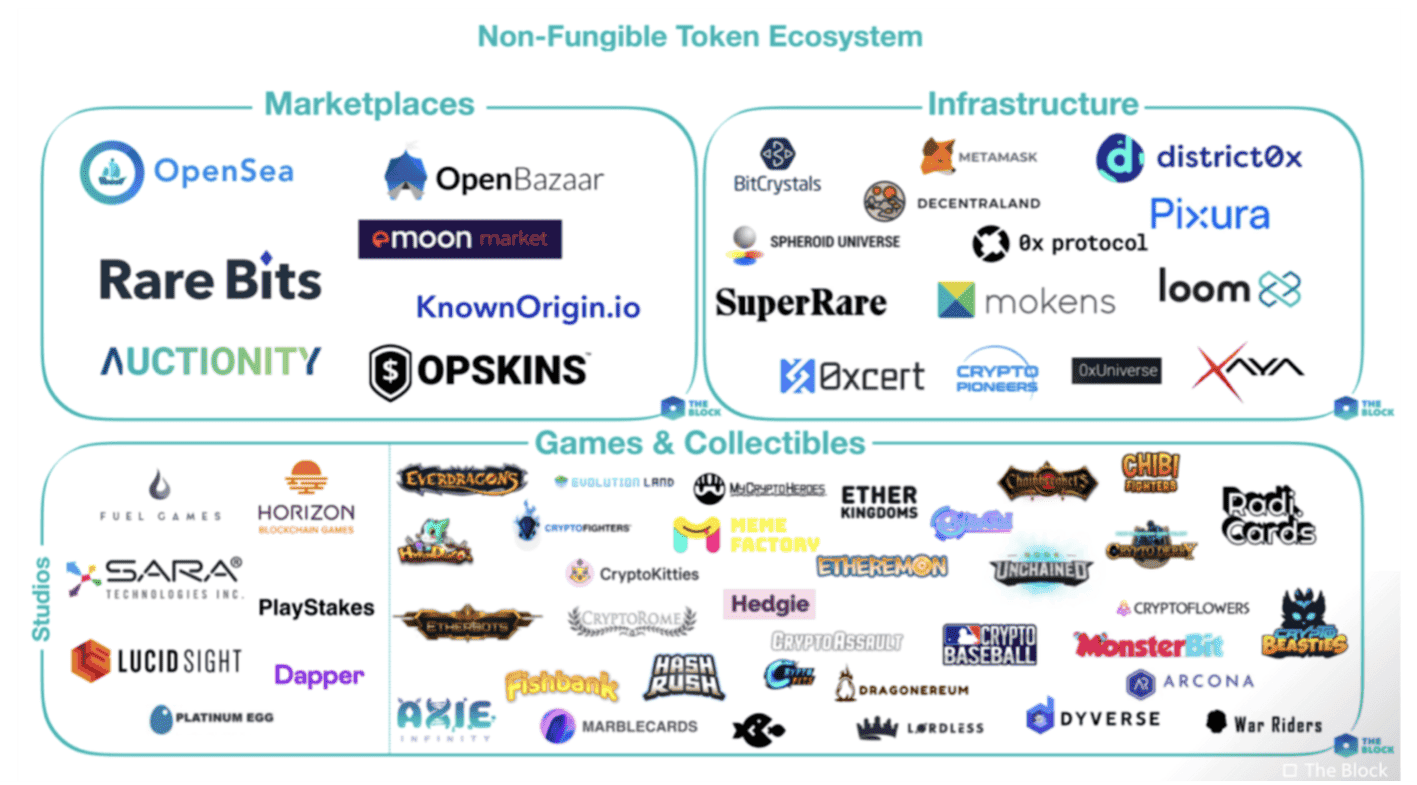
While local authorities claim to be taking steps to close mining centers, that doesn’t necessarily mean a solution. As mining takes place on a global scale, as soon as one market closes, another one opens. Kazakhstan itself only grew in the segment after China’s block of cryptocurrency operations.
The problem of high energy consumption is not a local issue, but an inherent characteristic of blockchain and cryptocurrencies. Unfortunately, this does not seem to be changing.
The path is still unclear
For Piers Kicks, who works with investment firms Bitkraft and Delphi Digital, the moment still requires a lot of research. In an interview with VentureBeat, he states that investors are looking to the new business however, most of them, are not really looking to the games.
“I feel like we’re still in a big discovery phase. During that, there are a lot of new mechanics and ways of thinking about things. We’re still learning about them” he says. Gabby Dizon, CEO of Yield Guild Games, believes that only those who understand the crypto universe will stand out. However, in the medium and long term, it is the game developers who will win.
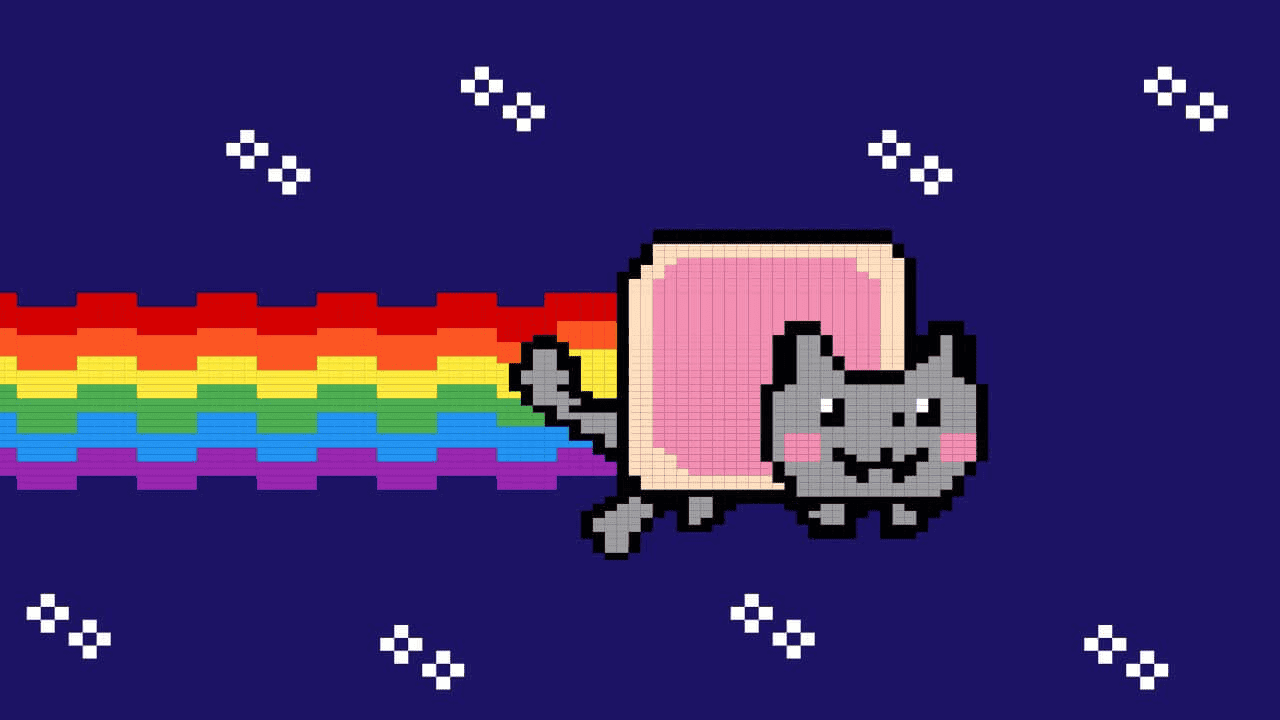
“Once game developers come in, I feel like they’re going to be a lot more powerful,” argues Dizon. So far, the NFT market is going through a real “gold hunt”. Some of the agents involved are disappearing — while others get stronger.
For now, it’s hard to determine if the trend is here to stay. It can easily disappear as some other trends that promised to change the industry. It can lose relevancy such as loot boxes and companion apps.
And you, what do you think about the matter? Do you see potential in NFTs or do you not believe in the technology’s potential? Leave your opinion in our comments section!
Recently, companies like Mojang have positioned against NFTs. However, giants such as Epic Games are favorable to this. The Fortnite owner, says that it’s up to developers to decide. Instagram, is also open to NFTs, apparently.

